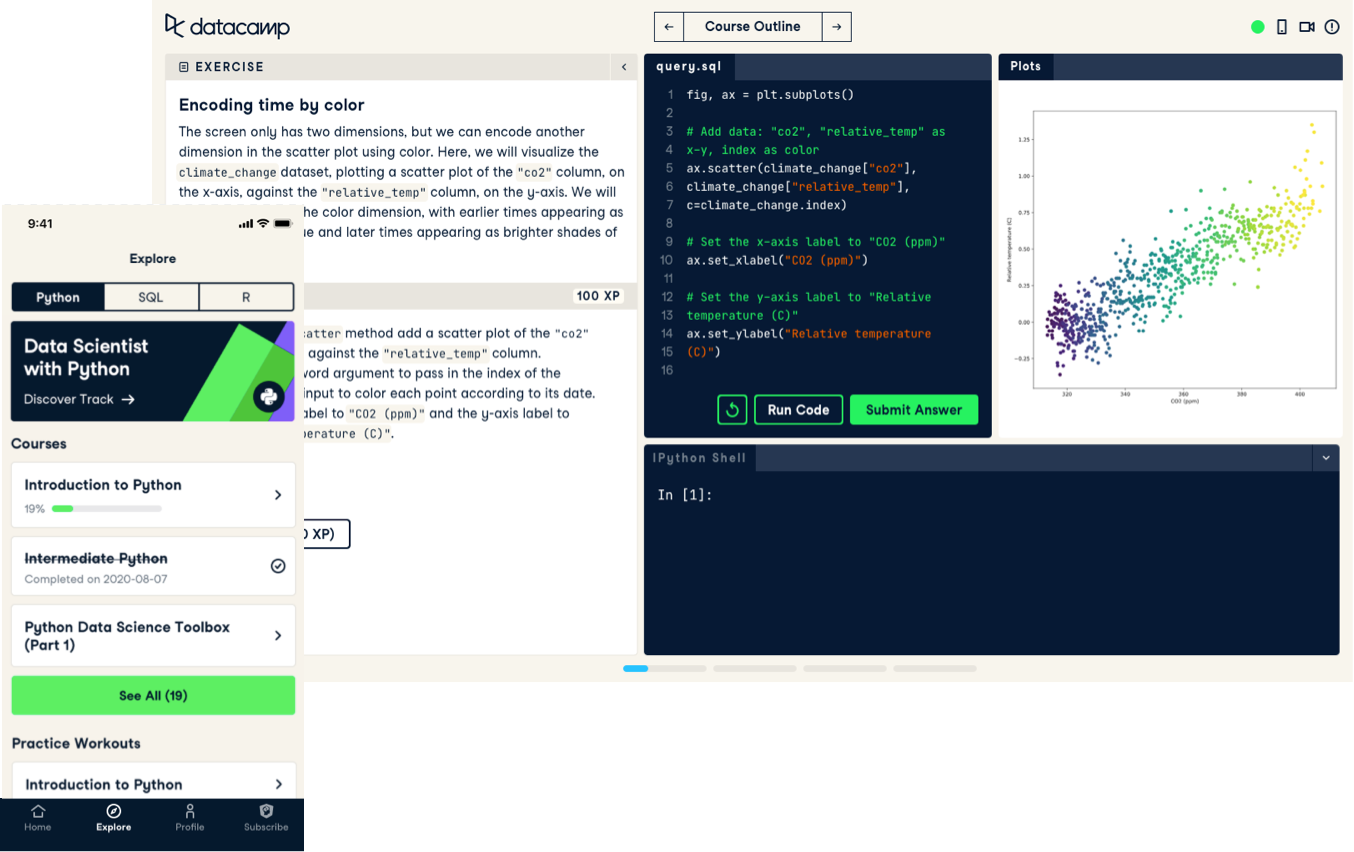Foundations of Inference in Python
Get hands-on experience making sound conclusions based on data in this four-hour course on statistical inference in Python.
Siga vídeos curtos conduzidos por instrutores especializados e pratique o que aprendeu com exercícios interativos em seu navegador.

Get hands-on experience making sound conclusions based on data in this four-hour course on statistical inference in Python.
Learn efficient techniques in pandas to optimize your Python code.
Learn to use R to develop models to evaluate and analyze bonds as well as protect them from interest rate changes.
Learn to use the Census API to work with demographic and socioeconomic data.
Diagnose, visualize and treat missing data with a range of imputation techniques with tips to improve your results.
Learn how to analyze survey data with Python and discover when it is appropriate to apply statistical tools that are descriptive and inferential in nature.
Master core concepts about data manipulation such as filtering, selecting and calculating groupwise statistics using data.table.
Learn how to create and assess measurement models used to confirm the structure of a scale or questionnaire.
In this course youll learn techniques for performing statistical inference on numerical data.
Learn to process sensitive information with privacy-preserving techniques.
Learn to develop R packages and boost your coding skills. Discover package creation benefits, practice with dev tools, and create a unit conversion package.
Learn how to produce interactive web maps with ease using leaflet.
Learn how to manipulate, visualize, and perform statistical tests through a series of HR analytics case studies.
Unlock your datas potential by learning to detect and mitigate bias for precise analysis and reliable models.
Use survival analysis to work with time-to-event data and predict survival time.
Learn how to use Python parallel programming with Dask to upscale your workflows and efficiently handle big data.
Learn to set up a secure, efficient book recommendation app in Azure in this hands-on case study.
Learn to build pipelines that stand the test of time.
Learn to solve increasingly complex problems using simulations to generate and analyze data.
Learn how to use GPT tools responsibly and confidently. Discover how these tools work and techniques for writing prompts and evaluating outputs.
Learn to distinguish real differences from random noise, and explore psychological crutches we use that interfere with our rational decision making.
Learn how to use PostgreSQL to handle time series analysis effectively and apply these techniques to real-world data.
Learn to use the Bioconductor package limma for differential gene expression analysis.
Learn the basics of A/B testing in R, including how to design experiments, analyze data, predict outcomes, and present results through visualizations.
This course is for R users who want to get up to speed with Python!
Extract and visualize Twitter data, perform sentiment and network analysis, and map the geolocation of your tweets.
Strengthen your knowledge of the topics covered in Manipulating Time Series in R using real case study data.
Learn how to import, clean and manipulate IoT data in Python to make it ready for machine learning.
Discover the power of discrete-event simulation in optimizing your business processes. Learn to develop digital twins using Pythons SimPy package.
Advance you R finance skills to backtest, analyze, and optimize financial portfolios.